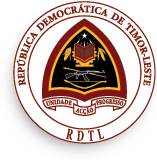Protected Areas
The history of Protected Area in Timor-Leste is a tale of conservation efforts aimed at preserving the nation's unique biodiversity and natural heritage. While the formal establishment of Protected Areas might be a relatively recent development, indigenous and local communities have long practiced traditional conservation methods. Here is a brief overview of the history of Protected Area in Timor-Leste:
1. Traditional Conservation Practices
Indigenous communities in Timor-Leste have historically practiced sustainable resource management and conservation. Traditional beliefs and customs often incorporated principles of stewardship and respect for the environment.
2. Colonial and Post-Independence Period
During the colonial era and after Timor-Leste gained independence, focus on conservation was limited due to other pressing concerns. However, some early initiatives aimed at safeguarding important sites did exist.
3. Emergence of Modern Conservation
In the late 20th century, there was a growing recognition of the need to protect Timor-Leste's rich biodiversity. This led to the establishment of the country's first protected areas.
4. Timor-Leste's First National Parks
Timor-Leste officially designated its first national parks, such as Nino Konis Santana National Park, in the early 2000s. These parks were established to conserve unique ecosystems, protect endangered species, and promote sustainable tourism.
5. Community-Managed Conservation
Many protected areas in Timor-Leste are managed in collaboration with local communities. This approach recognizes the traditional knowledge and practices of these communities in conserving natural resources.
6. Marine Protected Areas
Given its coastal location, Timor-Leste also established marine protected areas to conserve its rich marine biodiversity, coral reefs, and fish populations.
7. Conservation Partnerships
Over the years, Timor-Leste has partnered with international organizations, NGOs, and donor agencies to enhance its conservation efforts. These partnerships provide technical expertise, funding, and capacity-building support.
8. Legislative Framework
Timor-Leste's government has developed a legal framework for environmental protection and conservation. This includes laws and regulations related to protected areas, biodiversity, and sustainable resource management.
9. Research and Monitoring
Ongoing research and monitoring programs help assess the effectiveness of conservation efforts, identify emerging threats, and guide adaptive management strategies.
10. Environmental Education and Awareness:
Education and awareness campaigns have been conducted to engage the public, schools, and local communities in understanding the importance of conservation and sustainable resource use.
The history of Protected Area in Timor-Leste showcases a nation's commitment to preserving its unique natural heritage for future generations. As the country continues to evolve, so do its efforts to ensure the sustainability and vitality of its ecosystems and species.
